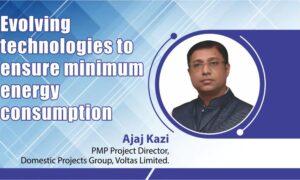Data-driven technology can improve farm productivity, which accrue to the farmer in the form of higher income and better living conditions.
Inological adoptions to enhance the supply chain for the rural and agricultural transit, Venkat Maroju, CEO, SourceTrace Systems, highlights, how they are contributing in creating a sustainable agriculture and sustainable farming communities, both socially and economically.
Kindly walk us through your Journey with Source Trace Systems?
SourceTrace was set up in 2007, but at that time, we were concentrating on products and solutions for branchless banking and agent banking – operating in the financial inclusion space. It was registered in November 2007 in the U.S., with our development office in Coimbatore, Tamil Nadu, India. However, after 5 years, we found we hadn’t gotten anywhere. At that time, I was advisory to Gray Ghost ventures, an impact investment firm that had invested in SourceTrace. I was then asked to take over as turnaround CEO. This opportunity gave me a prolonged exposure to the flip side of agriculture, having witnessed the Telangana farmers’ distress during the 2000’s at close quarters and having been part of the political movement for Telangana. The commitment to improving the situation of farmers had always been there at the back of his mind and he had been passionate towards the farmers’ cause. The time had come to bring the two together. As I took over SourceTrace development team realised that leveraging technology, as was done in branchless banking, could also be applied to agriculture.
During market research we found that agencies needed a way to manage their agribusiness, and they needed visibility throughout the supply chain. Identifying this as a need in the agtech space, we put forth our solutions and started with 5 customers in 2014 and we now have more than 140 customers. There were phases when growth was slow, but over a period of time, we’ve been able to ensure steady growth and profitability. One of the parameters by which we measure our own growth is on the number of farmers impacted. We are proud to say that we have improved the livelihoods of more than a million farmers across 27 countries. SourceTrace’s digital innovations aim to make agriculture predictable, profitable and sustainable. Our solutions have so far been applied to 120 crops.
How do you view the impending food safety issues in India? How is SaaS contributing to reduce the same whilst maintaining food standard?
Some of the challenges with regard to food safety in India include compromised quality, increasing adulteration cases and instances of product integrity issues. Such issues can cause irreplaceable damage not just to the individual health, but also to the reputation of brands that manufacture and market these products. With the advent of social media, companies have become prone to scrutiny from both government and consumers. One key element of keeping product integrity intact is, to have full view of the product throughout the various processes. Digitisation is helping manufacturers manage their risks more effectively with a range of tools aimed at communications between employees and support teams, and improving access to data and analytics.
SaaS technology has significantly contributed to food safety management issues. One of the most important differentiators of SaaS is that unlike traditional enterprise software, SaaS is affordable. It also does not require companies to have internal IT teams. This change was ushered in as highspeed internet connectivity became ubiquitous and affordable. The software vendors are hosting the applications in their own data centers and providing it as a service to their customers based on the usage or subscription, which has come to be known as Software as a Service or SaaS models in the industry. It has drastically reduced the overall cost of using the software and hence makes it accessible for smaller organisations.
SaaS models have come as a boon in digitising the agriculture value chain. Agriculture value chains are very fragmented and there are no big margins to invest in technologies. SaaS models have made the enterprise-class software accessible to the smallest players in the agriculture ecosystem. For example, SourceTrace is able to provide their platform to the smallest cooperatives having 400 marginal tribal farmers in Araku Valley in Andhra Pradesh.
What are your offerings for the agricultural sector to remain sustainable?
Data-driven agriculture enables precision agriculture, which advises on the precise amount of inputs and resources such as water, fertilisers and pesticides so that resources are conserved and environmental degradation of the farm is under control. Precision agriculture is all about using data which is generated on farm to help solve problems caused at the farm. The use of data-driven technology also helps improve farm productivity, which accrues to the farmer in the form of higher income and better living conditions.
To share a few cases, with Cargill cocoa and chocolate, the use of SourceTrace solution has resulted in the minimisation of deforestation and child labour in West Africa and increased the incomes of 230,000 small cocoa farmers who supplied to Cargill. Similarly, the Soliga tribal coffee growers of Karnataka who supply to Coffee Board were able to obtain premium pricing for their organic coffee using SourceTrace’s certification solutions. Also, the Chetna Cooperative that produces organic FairTrade cotton uses SourceTrace’s traceability solutions through which their cotton has been procured by global, ethically conscious buyers. A recent impact report by Dibella, a customer of the Chetna cooperative, reports that fair prices and premiums paid to Chetna’s organic Fairtrade farmers have created an incentive for young people to stay in farming and for families to remain united.
These are some of the examples that demonstrate how our solutions contribute to the creation of sustainable agriculture and sustainable farming communities, both socially and economically.
What according to you is most critical of using technology to meet rural challenges?
Mobile technologies have had profound impact on the rural population unlike any other technologies in the modern history of humans. So leveraging the connectivity and mobile computing power in the form of smart phones has the potential to create wonders for the rural population.
At SourceTrace we have pioneered building the software solutions to address the rural challenges in terms of financial inclusion and impacting smallholder farmers even before Android and iOS existed as we know today.
However, it is not easy to implement digital technologies in the rural setting and it is important to consider several factors. There is no guarantee that connectivity exists in all the places; so the software solutions we built are able to operate in both offline and online mode. This is of paramount importance. Secondly, the literacy levels are low so the solution we built is targeted to be used by high school graduates. Thirdly, there is the need to support local languages. We cannot assume that everyone would be proficient in English, so we began to work with local languages. SourceTrace supports more than 15 local languages in their mobile applications.
What technology do you organisation provide to trace the food transportation to ensure timely and safe transit?
This solution offered by SourceTrace is called ‘Traceability’. The food safety chain is more complicated in our globalised world because it spans international borders and encounters domestic and global regulations. Without technology, managing this complex network is next to impossible. SaaS technology-based traceability solution enables capture of relevant data related to food supply chain from remote and multiple locations, throughout the value chain right from farm through transit and until the retail store. This data is stored in a central repository, enabling near real-time and complete visibility so that any anomaly that comes in the way of timely and safe transit can be spotted and corrected easily, minimising risk and saving costs.
Cookie Consent
We use cookies to personalize your experience. By continuing to visit this website you agree to our Terms & Conditions, Privacy Policy and Cookie Policy.














